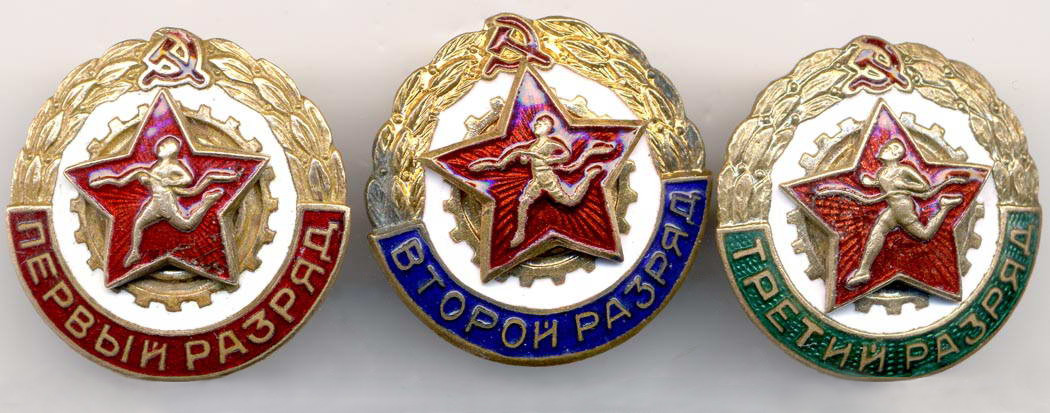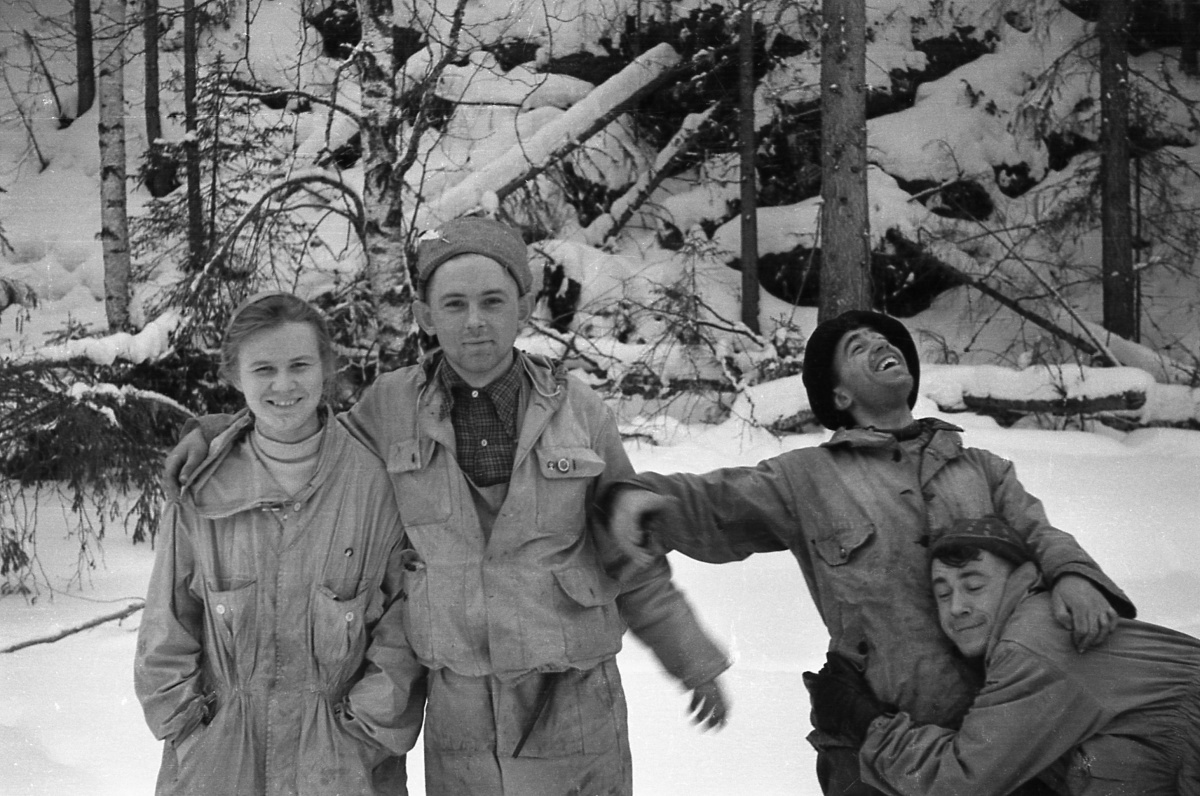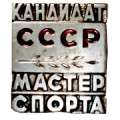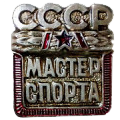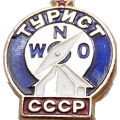
Trek categories and sports ranks
Author Vladimir Borzenkov
I decided to volunteer some information to make this article Hiking experience of Dyatlov group more comprehensible for readers that are not familiar with the Soviet Union and Russia. What is a category III of difficulty trek, how many categories are there and what are the rules for classification?
Hiking categories are characteristics of the content or quality level of the trip itself. In 1959, a classification was in force, which contained three levels of difficulty. This should not be confused with difficulty, as it is now accepted. At the time of the events the classification of the sports was in its infancy. The categories of difficulty only appeared in 1963. In 1959 tThe categories were classified according to 3 parameters:
- total trek distance
- duration of the trek in days
- the duration of fully autonomous transitions in difficult conditions for a certain period.
Indirectly, this was influenced by the characteristics of the trekking area, since there were complex natural obstacles that had to be overcome for a limited time. This is a bit like a rally.
At that time, there were five different types of hiking associated with different types of tourism: "walking", "ski", "water", "mountaineering" and "bicycle". After 1963-1965 "hiking" was defined as going into the mountains with overcoming categorized landmarks i.e. passes and peaks, by analogy with mountaineering. "Automobile", "motorcycle" and "speleo" (going into caves) appeared too. But in 1959 this was not yet the case.
The sports were divided into winter and summer. Naturally, there were no water and cycling trips in the winter, and ski trips in the summer. The rest could be done in any season, but deviations from the traditional parses characteristic of the season were the exception to the rule. For example, only a few (from 1 ... 2 to 5) groups from the entire USSR with a population of 208 million people in 1959 could make winter mountain hiking trips. In total, at that time, about 2 or 3 thousand sports groups could trek a year in all regions of the country. This is a statistical estimate based on data from the tourist clubs of Moscow and Leningrad, which accounted for about half of all sports tourism groups in the USSR in the late 1950s.
The length and duration of trek was different for different types, the shortest was for ski trek, and the longest for cycling and water trek.
For example, for the third ski category (the one that was planned for the Dyatlov group), it was equal in total length to at least 300 km, of which at least 100 km they had to go with overcoming natural obstacles i.e. steep uphill climbs, steep descents, tracing (making a path in deep snow) ski tracks, moving through a dense forest with undergrowth, moving in a treeless area far from villages, etc.
The total duration of the trip was to be at least 16 days, including in a completely unpopulated area - at least 8 days. This means that the distance to the nearest village should be at least two large daytime crossings - at least 50, 60 km. Moreover, they had to make at least 6 nights completely in winter conditions. This means that they had to fully organize the night with only the set of equipment that they brought with them. The overnight stay in huts, shelters, or abandoned houses should not exceed 10 days out of 16.
Lower categories had softer standards. For example, in the first category there was no requirement to organize overnight stays completely in winter conditions at all. That is, they could go through the entire journey with overnight stays in huts and villages. This all applies to winter ski trekking. In other types of tourism, the standards were different, and will not be subject of discussion in this publication.
A person who has made several journeys of different levels must have had some kind of qualification. It was expressed by such a term as a class; this meant a degree or level that was determined and assigned by a special commission when certain requirements were met.
This is some indicator of experience, but it cannot be interpreted unambiguously. The assimilation of experience is different for different people, even with the formal fulfillment of the same requirements.
At that time, there were three categories of different levels: third, second and first (in increasing order), as well as the level of "Master of Sports of the USSR", which simultaneously qualified as a sports honorary title. The general qualifying table in 1957-1961 looked like this:
Hiking ranks requirements 1957–1961
The hiker must have taken part the following categories of difficulty treks, as a participant and/or leader
| Category I | Category II | Category III | |||||||||||
 |
 |
 |
 |
 |
 |
||||||||
| Master of Sports | 12 | 1 | 1 | 1 | 1 | 1 | 1 | 1 | 1 | 1 | 1 | 1 | 1 |
| Class 1 | 9 | 1 | 1 | 1 | 1 | 1 | 1 | 1 | 1 | 1* | |||
| Class 2 | 5 | 1 | 1 | 1 | 1 | 1 | |||||||
| Class 3 | 2 | 1 | 1 | ||||||||||
* For this value, it is allowed to replace participation in a summer trip with participation in a winter trip of the third (the same) category of difficulty.
At that time, there was still no requirement for a distinction between different types of tourism, when calculating the category of difficulty of a trek, and allowed it to be taken into account the categories from different types of tourism. In principle, this is wrong, but in 1959 the rules didn't reflect this understanding. Of course, there were already restrictions on the replacement of types, especially with regard to the permission to go to the next category on different treks. For example, if a hiker had been on a second category ski (winter) trek, he was allowed to go to the third category summer hiking (or mountaineering) trek. Then if a hiker had been on a third category water trek, it didn't give him a pass for a third ski (winter) trek. These are completely different experiences and require different skills. They were allowed to go on a third category in winter, after a passing the second hiking or mountaineering in the summer, which is also incorrect, but at the time was allowed as an exception.
Those who were certified for a category were given a special sports badge of the corresponding category.
They were made of brass and have a diameter of 30 mm (1.2"). The lower sector has a color corresponding to the class: the first is red, the second is blue, the third is green. The badge is attached to the garment using a large decorative nut that is screwed onto a threaded pin.
In the photo of Georgiy Krivonischenko (he is on the left on the pocket of his storm jacket), you can see two badges he was wearing on the fateful trek.
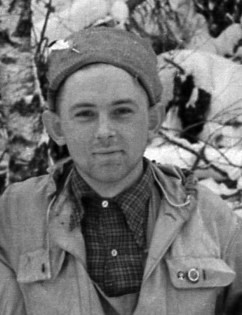
 Badge "Tourist of the USSR" |
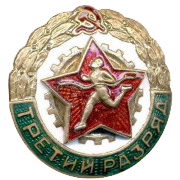 Badge Class 3 |
The first one is how badge "Tourist of the USSR" looked in 1959. It was made of brass 15 mm (0.6") in diameter. The badge is attached to clothing with a decorative nut that is screwed onto a threaded pin.
All members of the Dyatlov group had badges like this one. But not all of them wore them on this journey. In some documents in the column "category" you can read "badge". This means that the person referred to in this section has been awarded such a badge. This means he has earned this level. It was necessary for any club member to be admitted to hike in any category, starting with the first. After 1963 the design of this badge was changed.
The second one is a badge class 3. Evgeniy Maslennikov's protocol says that several members of the Dyatlov group were qualified for Class 2, but they didn't file the paperwork. If they had applied, Krivonischenko and some other hikers could have worn badge Class 2. Wearing such badges was not mandatory. Georgiy decided to show off on the trek.
Badges changed design after 1963
Six years after the events on Dyatlov Pass, I received a badge Class 1 of the new design:
The badge Class 1 of the new design was legalized just in 1965. From 1963 to 1965 there were other badges I am showing an example of below. Due to the big changes in the sports infrastructure badges of this particular type were not awarded. It was made of aluminum alloy and 20x25 mm (0.78"х0.98") in diameter. It was attached to clothes with a pin, so it was almost impossible to wear it on a hike. I have never done it and consider it vain.
Here is a sample of badge Class 3 from the period of 1963-1965, which I have left from when I participated in the commission for awarding these "classes" to other hikers.
A badge Class 3 tourist in the period from 1963 to 1965. It was made of an aluminum alloy and had a size of 12x18 mm (0.47"х0.7"). It was attached to clothing with a pin. The badges Class 2 and 1 tourist differed only in the color of the background and filling in the letter "T". For Class 2 the background was white (silver) and the fill was blue, and forClass 1 the background was golden and the fill was red. Dyatlov's group did not live to see these badges.
After 1965, another level was added to the classification. He was called "Candidate Master of Sports" and filled a large gap between the first category and "Master of Sports".
The first badge of "Candidate Master of Sports" was made of nickel silver 20x25 mm (0.78" х 0.98") in size. It was attached to clothing with a pin. There it was necessary to complete many different categories of difficulty. At the same time, not so much the difficulties of tourism were taken into account since the "infancy" of tourism development had already passed, but the main attention was paid to passing technically difficult obstacles on the route. By their quantity and quality was determined the category of difficulty. It is a more sporty approach to assessing the experience and capabilities of the hiker. There were five categories, and in the 80s a sixth category was added. It corresponded to the fact that if the level of experience and skills required up to the "Master of Sports" class can be put into five categories, then the sixth one exceeds this level. Mountaineering of an extremely complex level had appeared and an appropriate assessment is required in order to obtain guarantees of safety in such expeditions.
The "Master of Sports" badge was made of cupronickel 22x25 mm (0.86"х0.98") in size, attached to clothing with a pin. It was an honorary title in the USSR. Before the introduction of the category six of difficulty this class was the highest achievement in hiking. The average period to meet the standard "Master of Sports of the USSR" was from 6 to 8 years from the beginning of active regular hiking. For comparison, I can say that the standard of the Class 2 (after 1965 it is more difficult than in 1959) can be confidently fulfilled in 1 or 1.5 years. This does not refer to "professional" hiking activities like guides and rescuers. Standards are being created for qualified hiking enthusiasts.
To go on a hike it is not necessary to follow all this classification, people can do it freely. This classification was created in order to clearly and confidently assess the sports capabilities of hikers. To follow it or not is a personal choice. It's like working at the university without going for a degree.
The badge "Tourist of the USSR" stands for an introductory level. It was possible to earn such a badge without going on even a first category trek. It was possible to check the requirements in several short trips. Two, three or four. It was only necessary to collect a total of, for example, 180 km for hiking or skiing trips on weekends or holidays. In the Tourist club of the UPI University, they often practiced such travels for training before a big trip, and then solemnly presented these badges to newcomers at outdoors gatherings or at themed parties. The newcomers were very proud of these badges, and not just the beginners. For example, Georgiy was fond of his badge.
The design of the badges changed after 1963. The new badge "Tourist of the USSR" was made of aluminum alloy 17 mm (0.67") in diameter. It was attached to clothing with a pin. I don't like the new design as much as the old one.
Badges after 1991
After 1991 this system was replaced with a new one, only partially repeating the classification and requirements. A lot of new rules and definitions are introduced, not always successful in my opinion, but this is a completely different story. Although, what we fought for for a long time was implemented. For example, there are new "Master of Sports of International Class", "Honored Master of Sports", several types of tourism can be more widely combined. But there is practically no unified and comprehensive training of qualified hikers as it transitioned to a completely self-financed system. Therefore, the number of hikers in Russia has decreased several times compared to the USSR, even if we do not take into account the fact that many republics have become independent states, where such tourism has almost completely disappeared.
This began long before the restrictions of the pandemic. Many barriers appeared where there were none before. The main problem is that for many such expeditions became unattainable for financial reasons. Previously, we could trek in the Sayan Mountains, Altai or Transbaikalia for 3 year student scholarships, which were not very large in comparison with salaries in the industry. Now, even with a good job and salary, very few can do it.
For example, in 1983, Anatoliy Ostrovskiy and I looked at trekking statistics for the winter season on the Kola Peninsula. This is a fairly close area from the central regions of Russia, reminiscent of northern Canada or Alaska in character. The number of hiking groups was about 300. For the whole 2007 there were no more than 50. Now there are even fewer.

